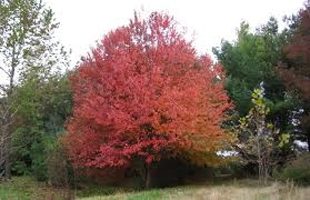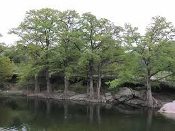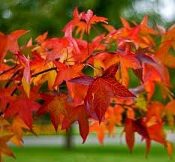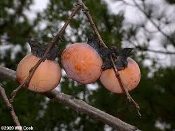Acer rubrum, Red Maple 12-18″, Wholesale Native Bare Root Trees
$1.60
650 in stock
Acer rubrum, Red Maple 12-18″, Wholesale Native Bare Root Trees
An order minimum of 100 of this size/species is required.
100 or more $1.60 each
300 or more $1.40 each
1,000 or more Please Call
For Shipping, Install and additional info please see “About Bare Root“.
Native bare Root Trees are cut and shipped while dormant, late November to early spring.
See all available Bare Root Trees
Order Minimum
There is a minimum order total of $150.00.
before tax (VA residents only) and shipping.
There are NO EXCEPTIONS.
Description
Acer rubrum, Red Maple 12-18″, Wholesale Native Bare Root Trees
An order minimum of 100 of this size/species is required.
For Shipping, Install and additional info please see “About Bare Root“.
Native bare Root Trees are cut and shipped while dormant, late November to early spring.
See all available Bare Root Trees
Wholesale Bare Root Maples, pricing is based on quantity.
Botanic Name (s): Acer rubrum
Common Name(s): Red maple, scarlet swamp maple soft maple
Mature height: 40-100′
Mature spread: 30-75′
Sun Exposure:
- Full Sun
- Part Sun
- Part Shade
Soil moisture:
- Moist
- Wet
Soil Ph: 5.4-7.1
Soil Type:
- Clay Soil – High clay content, fine texture
- Loamy Soil – Mostly silt, sand, some clay
- Organic Soil – High level of decayed leaves, bark
- Sandy Soil – Coarse texture
Flower Color / Bloom Time: Inconspicuous / March-April
Fruit: April-May / Tan winged
Fall Color: Red / Orange / Yellow
Native Habitat: Swamps, uplands, rocky hillsides, dunes
Notes:
- Earliest spring bloomer
- Adaptable
- Flood Tolerant
- Deer Resistant
Average Wildlife Value:
- Beneficial Insects
- Songbirds
- Small Mammals
FAC – Occur in wetlands and non-wetlands
Native to Coastal Regions
Native To Mountain Regions
Native to Piedmont Regions
Can be considered invasive
Wholesale Bare Root Maples Native Tree
Description
Red maple is a native, deciduous tree in the Sapindaceae (maple) family that may grow to 120 feet tall with a trunk 6 feet in diameter, but is more commonly 40 to 70 feet high and 1 1/2 to 2 1/2 feet across. It is a handsome shade tree with a rounded crown and ascending branches to a 30- to 50-foot spread. In nature, it can be found growing in upland deciduous forests, up to at least 1500 meters in elevation.
Red maple is easy to grow in average, medium to wet, well-drained soil in full sun to partial shade. It is tolerant of a wide range of soils, including clay, but prefers moist, slightly acidic conditions. It is very cold hardy and grows faster than Norway and sugar maples, but slower than silver maples.
This is one of the first trees to show color in the fall. The leaves are opposite, with three to five palmate lobes and toothed margins on long red stems. The red maple has a slightly smaller leaf than most other species of maples. Its leaves’ most distinctive feature is a rough, saw-like edge. If the leaf margin, or edge, of your maple’s leaves appear serrated, it is probably a red maple.
The bark of young trees is smooth and silvery-gray, becoming scaly and dark with age. Small, red flowers in clusters mature in late winter, and the tree is one of the first to flower in early spring. During spring, light brown or red-winged samaras mature.
In the fall the leaves turn orange-red, though the brilliance of this color can vary among individual trees. It is easy to plant and establish as a transplant of a small specimen bare-root, or balled and burlapped.
This tree is the best choice for a soft maple. It makes an excellent lawn, park, or street tree. It has some tolerance for air pollution. The light, creme-colored wood, which is known commercially as soft maple, is heavy, closed grained, and rather weak. It is used as pulpwood and in the manufacture of furniture and woodenware.
Acer rubrum, Red Maple 12-18″, Wholesale Native Bare Root Trees
An order minimum of 25 of this size/species is required.
For Shipping, Install and additional info please see “About Bare Root“.
Native bare Root Trees are cut and shipped while dormant, late November to early spring.
See all available Bare Root Trees
You may also like…
Related products
-

Taxodium distichum, Bald Cypress 2-3′, Wholesale Native Bare Root Trees
$3.75 Add to cart -

Liquidambar styraciflua Sweet Gum 18-24″ Wholesale Native Bare Root Trees
$8.00 Add to cart -

Diospyros virginiana, Persimmon 18-24″ Wholesale Native Bare Root Trees, Fruit Tree
$8.00 Add to cart -

Quercus alba, White Oak 12-18″ Wholesale Native Oak Trees Bare Root
$1.60 Add to cart





